In Little Tokyo, Yapa shines with sophisticated Peruvian-Japanese cooking
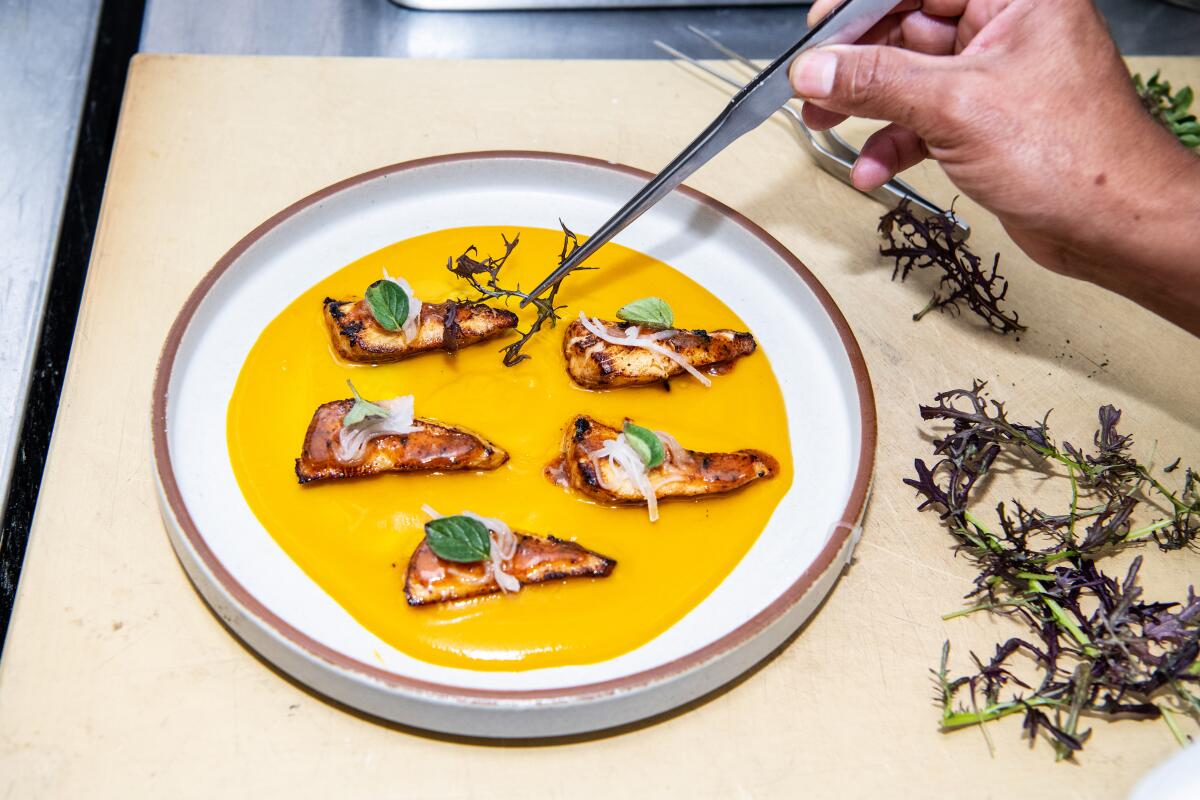
- Share via
At Yapa, the new Japanese-Peruvian restaurant in Little Tokyo, cumbia music tumbles from the speakers and the most popular appetizer in the house is a dainty-looking plate of churros.
The pastries are pudgy as cigars and glittery with sugar, with a bright purple stripe of huckleberry jam down their crisp spines. They’re filled with a slightly fishy and extremely rich monkfish liver pâté whipped to the consistency of cream. The dish is bewilderingly good, a happy union of savory and sweet that summons memories of peanut butter with tart summer preserves.
The unorthodox churros were my recent introduction to the cooking of Richie Lopez, who operates Yapa with partner Josh Goldman. A native of Lima, Peru, Lopez got his start in Los Angeles kitchens as a dishwasher, rising through the ranks under chef Ricardo Zarate at now-shuttered Peruvian hot spots like Mo-Chica and Paiche.
At Yapa, he marries traditional Peruvian ingredients with Japanese technique in the hybrid style of Nikkei cuisine, a genre that originated with the thousands of Japanese workers who immigrated to Peru at the dawn of the 20th century. Nikkei’s unofficial ambassador is Nobu Matsuhisa, who cooked in Lima in the 1970s, and who helped reimagine Peruvian dishes such as tiradito, sashimi-like raw fish preparations that are typically quick-marinated in chile-blasted sauces.
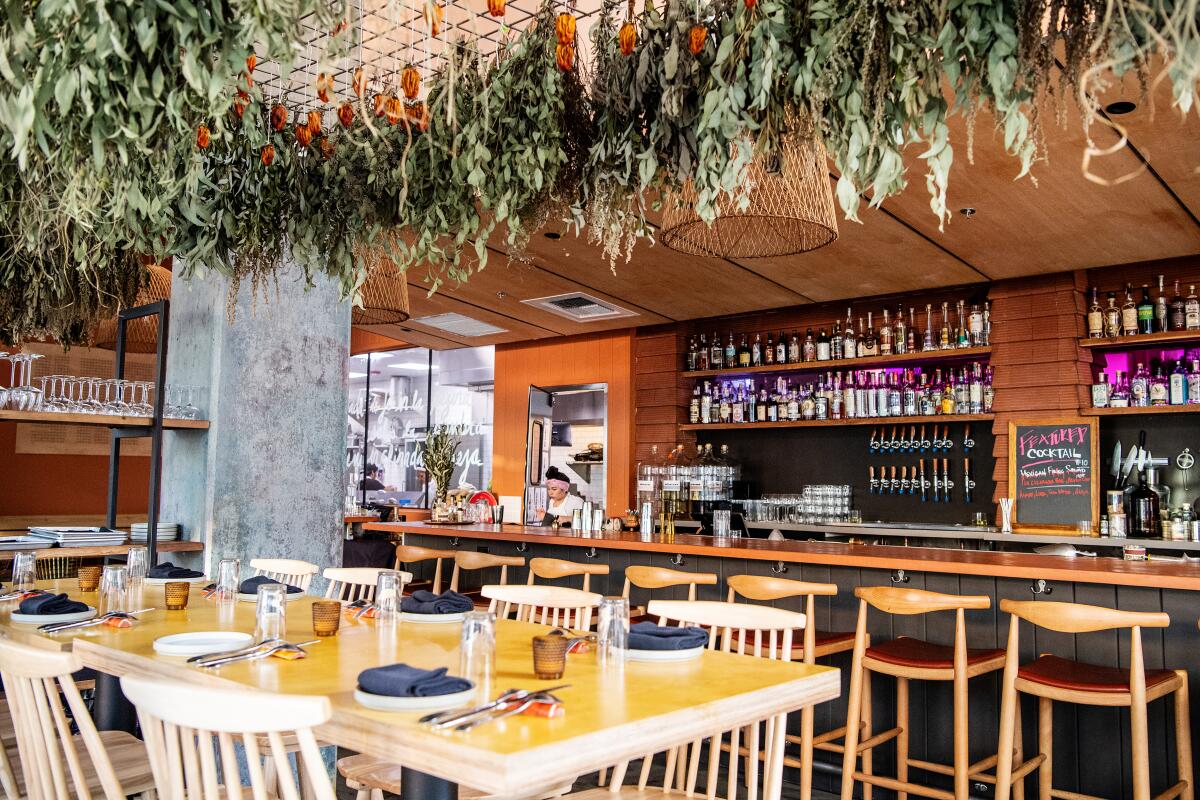
Lopez has a gift for nuanced and florid tiraditos made using locally caught seafood. He sets creamy slips of uni on finely sliced bigeye tuna and serves it over a small, fragrant lake of oil spiked with the voluptuous heat of rocoto chiles. Slender halibut slices are served with lightly pickled grape slices and crispy quinoa chips over a thin sauce needled by chiles and fresh citrus. Firm, chilly pieces of raw yellowtail are slaked in a bright vinaigrette that turns the wobbly gobbets of flesh into a heady catalyst of tanginess and heat. His arrangements are exacting, balanced, with subtle but distinct shifts in flavor and tones.
There are rousing takes on Peruvian staples like the bean-and-rice dish called tacu tacu, here spliced with Fresno chiles. A fancied-up lomo saltado, made with dry-aged rib-eye marinated in a sweetish soy sauce, is compulsively good over rice; it’s served with a tumbler bouquet of the crispiest French fries I’ve ever eaten.
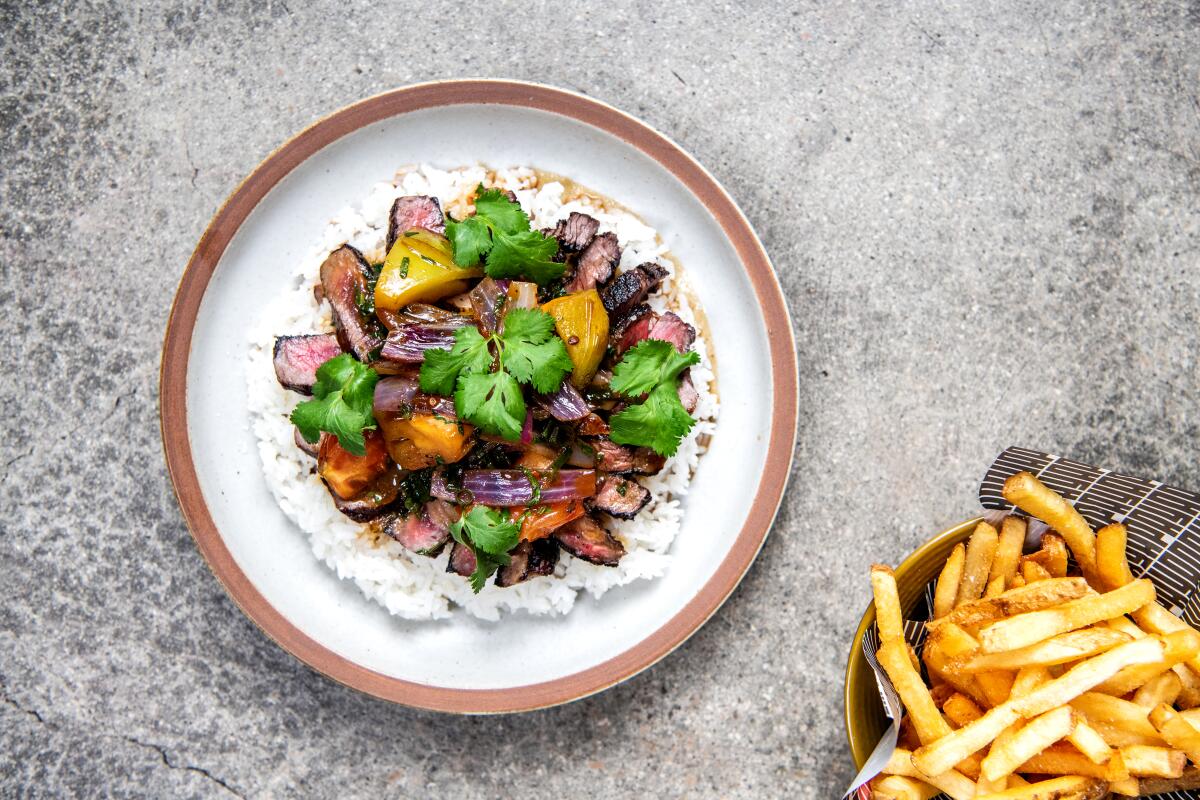
Lopez’s fanciful version of the mashed potato dish called causa is superb. The lemony mash is molded into a round cake and layered with a tweezered arrangement of thinly sliced yellowtail and daikon radish. Beef tartare is gilded with caviar and huacatay, the minty herb native to the Andes. At least half the pleasure of eating it comes from the crispy disc of fry bread that accompanies it, made using local acorns gathered by forager Jess Starwood.
You can spend $72 on 16 ounces of the restaurant’s dry-aged steak, but I’ve found more pleasure in the kitchen’s snacky smaller plates: Skewered beef hearts are wonderful with garlicky rocoto salsa. Korokke, nori-wrapped Japanese croquettes, are filled with a creamy corn pureé that makes you dream of summer. Panko-dusted grilled oysters are submerged in a breathless amount of nori-infused butter. A corvina ceviche is served in a tangle of slivered red onions and kernels of toasted Andean corn, everything drowned in a broodingly tangy leche de tigre sauce good enough to drink on its own.
Yapa in October slipped into the corner space that formerly housed Seoul Sausage, taking its place among the luxury high-rise apartments and business-class hotels that line this stretch of Los Angeles Street. The low-lit space, currently open for dinner and late-night snacking only, is blandly good-looking with blond wood, a sleek bar and a partially open kitchen encased behind glass. The room’s distinguishing feature is a dramatic, chandelier-like installation with bundles of dried herbs suspended over the middle of the room.
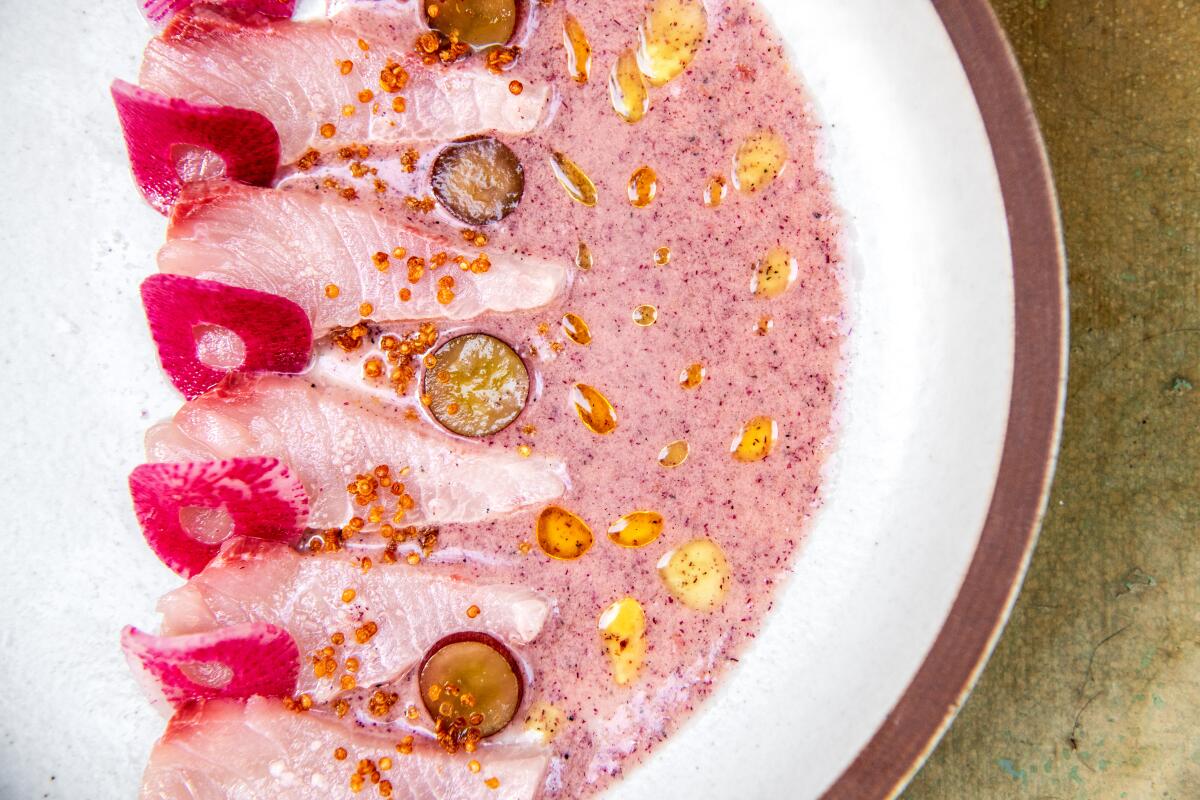
The restaurant, which takes its name from the Quechua word that translates into English as “a little extra,” is a drinking destination as much as a restaurant. Goldman has designed a strong cocktail menu that leans heavily into locally grown herbs, cane spirits and tropical fruits. Try the stiff Mauro Mina, a rummy pineapple-whey drink, and the Sapa Inca, a blend of pisco, Inca Kola and sparkling wine, the closest thing in the house to a Pisco Sour.
A cocktail earns you a complimentary tray of the Andean corn snack called cancha, slightly puffy, teardrop-shaped kernels that crackle easily under the teeth and leave a faint wheaty scent on your breath. As if the pleasures of tiraditos, aged beef or fish churros weren’t enough, Yapa delivers a little extra.
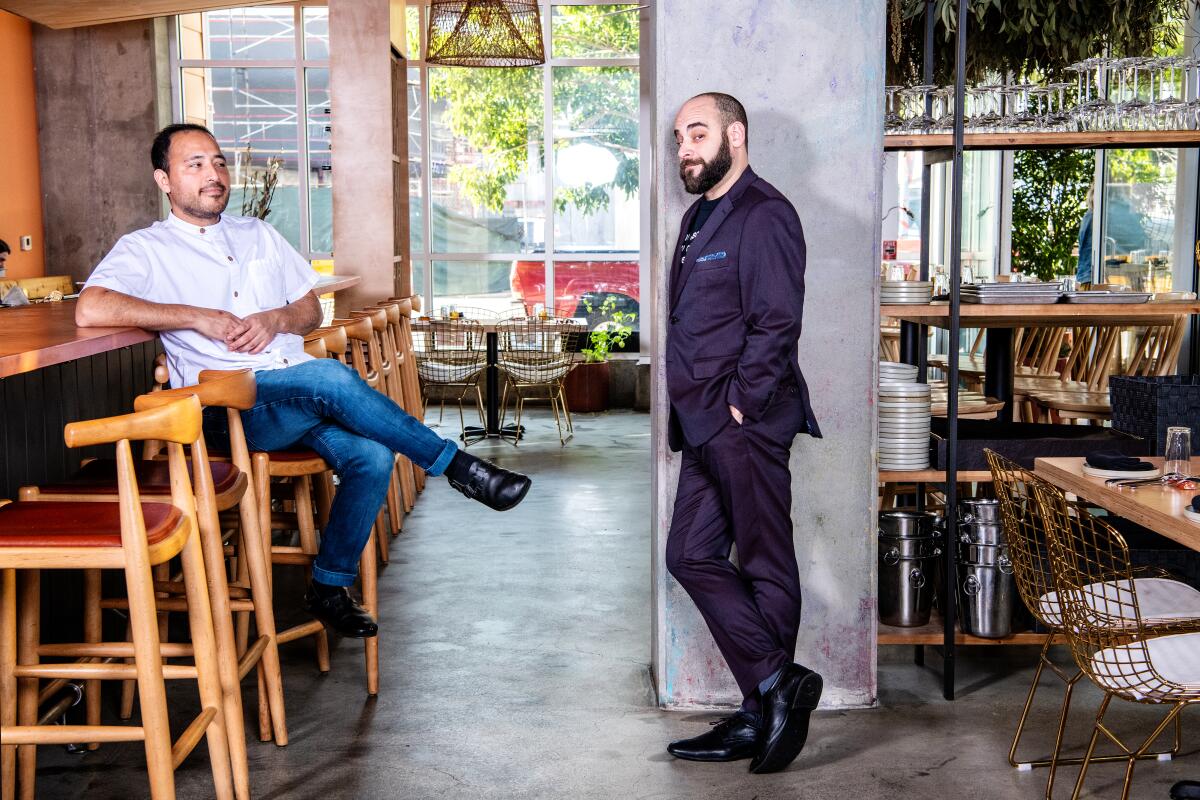
Yapa
Location: 236 S. Los Angeles St., Suite G, (213) 947-3399, yapa.la
Details: Credit cards accepted. Full bar. Lot and street parking. Wheelchair accessible.
Prices: Snacks $4-$12, cold dishes $9-$24, hot dishes $17-$22, raw dishes $3.75-$36.50, shareable entrees $28-$148
Recommended dishes: Churros, tiraditos, causa, beef tartare, lomo saltado
More to Read
Eat your way across L.A.
Get our weekly Tasting Notes newsletter for reviews, news and more.
You may occasionally receive promotional content from the Los Angeles Times.









